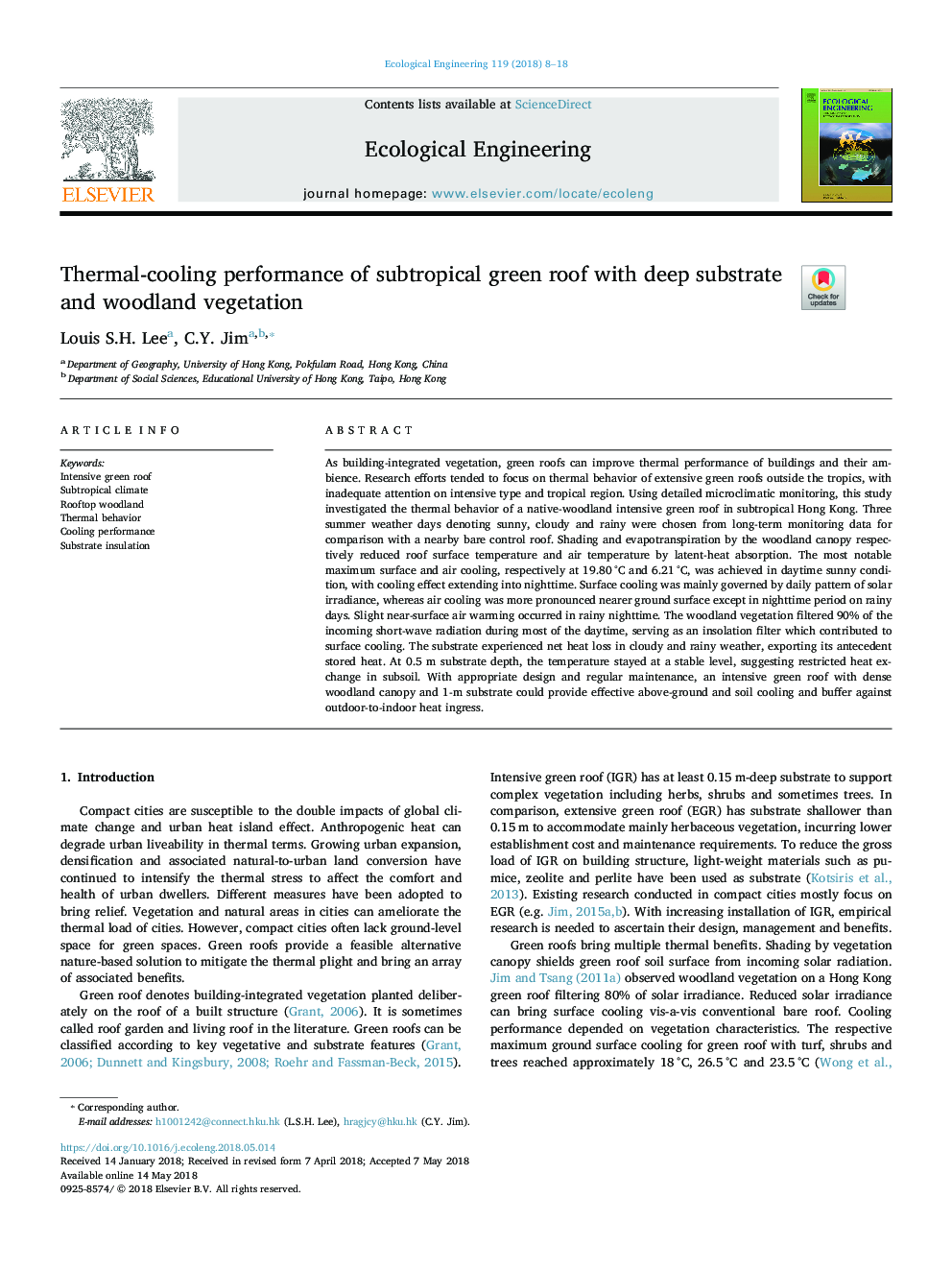| Article ID | Journal | Published Year | Pages | File Type |
|---|---|---|---|---|
| 8847775 | Ecological Engineering | 2018 | 11 Pages |
Abstract
As building-integrated vegetation, green roofs can improve thermal performance of buildings and their ambience. Research efforts tended to focus on thermal behavior of extensive green roofs outside the tropics, with inadequate attention on intensive type and tropical region. Using detailed microclimatic monitoring, this study investigated the thermal behavior of a native-woodland intensive green roof in subtropical Hong Kong. Three summer weather days denoting sunny, cloudy and rainy were chosen from long-term monitoring data for comparison with a nearby bare control roof. Shading and evapotranspiration by the woodland canopy respectively reduced roof surface temperature and air temperature by latent-heat absorption. The most notable maximum surface and air cooling, respectively at 19.80â¯Â°C and 6.21â¯Â°C, was achieved in daytime sunny condition, with cooling effect extending into nighttime. Surface cooling was mainly governed by daily pattern of solar irradiance, whereas air cooling was more pronounced nearer ground surface except in nighttime period on rainy days. Slight near-surface air warming occurred in rainy nighttime. The woodland vegetation filtered 90% of the incoming short-wave radiation during most of the daytime, serving as an insolation filter which contributed to surface cooling. The substrate experienced net heat loss in cloudy and rainy weather, exporting its antecedent stored heat. At 0.5 m substrate depth, the temperature stayed at a stable level, suggesting restricted heat exchange in subsoil. With appropriate design and regular maintenance, an intensive green roof with dense woodland canopy and 1-m substrate could provide effective above-ground and soil cooling and buffer against outdoor-to-indoor heat ingress.
Related Topics
Life Sciences
Agricultural and Biological Sciences
Ecology, Evolution, Behavior and Systematics
Authors
Louis S.H. Lee, C.Y. Jim,
